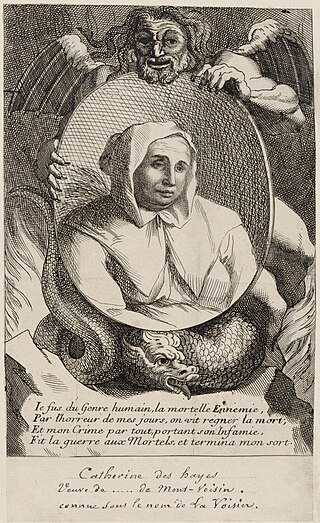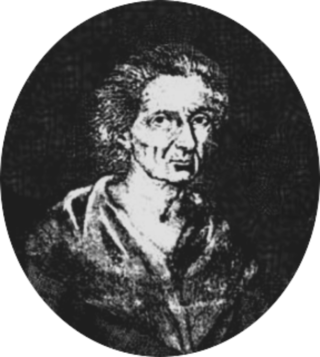
1659 (MDCLIX) was a common year starting on Wednesday of the Gregorian calendar and a common year starting on Saturday of the Julian calendar, the 1659th year of the Common Era (CE) and Anno Domini (AD) designations, the 659th year of the 2nd millennium, the 59th year of the 17th century, and the 10th and last year of the 1650s decade. As of the start of 1659, the Gregorian calendar was 10 days ahead of the Julian calendar, which remained in localized use until 1923.

A potion is a liquid "that contains medicine, poison, or something that is supposed to have magic powers." It derives from the Latin word potio which refers to a drink or the act of drinking. The term philtre is also used, often specifically for a love potion, a potion that is supposed to create feelings of love or attraction in the one who drinks it. Throughout history there have been several types of potions for a range of purposes. Reasons for taking potions ranged from curing an illness, to securing immortality to trying to induce love. These potions, while often ineffective or poisonous, occasionally had some degree of medicinal success depending on what they sought to fix and the type and amount of ingredients used. Some popular ingredients used in potions across history include Spanish fly, nightshade plants, cannabis, and opium.

Catherine Monvoisin, or Montvoisin, née Deshayes, known as "La Voisin", was a French fortune teller, commissioned poisoner, and professional provider of alleged sorcery. She was the head of a network of fortune tellers in Paris providing poison, aphrodisiacs, abortion, purported magical services and the arranging of black masses, with clients among the aristocracy and became the central figure in the famous affaire des poisons. Her purported organization of commissioned black magic and poison murder was suspected to have killed 1,000 people, but it is believed that upwards of 2,500 people might have been murdered.

Hélène Jégado was a French domestic servant and serial killer. She is believed to have murdered as many as 36 people with arsenic over a period of 18 years. After an initial period of activity, between 1833 and 1841, she seems to have stopped for nearly ten years before a final spree in 1851.

Aqua Tofana was a strong poison created in Sicily around 1630 that was reputedly widely used in Palermo, Naples, Perugia, and Rome, Italy. It has been associated with Giulia Tofana, or Tofania, a woman from Palermo, purportedly the leader of a ring of six poisoners in Rome, who sold Aqua Tofana to would-be widows.

Campo de' Fiori is a rectangular square south of Piazza Navona in Rome, Italy, at the border between rione Parione and rione Regola. It is diagonally southeast of the Palazzo della Cancelleria and one block northeast of the Palazzo Farnese. Campo de' Fiori, translated literally from Italian, means "field of flowers". The name dates to the Middle Ages when the area was a meadow.

The Tor di Nona is a neighborhood in Rome's rionePonte. It lies in the heart of the city's historic center, between the Via dei Coronari and the Tiber River. Its name commemorates the Torre dell'Annona, a mediaeval tower which once stood there and was later converted into one of the city's most important theatres, the Teatro Tordinona, later called the Teatro Apollo.

Giovanna Bonanno was an alleged Italian witch and professional poisoner known as la vecchia dell'aceto, "The Old Vinegar Lady."
Giulia Tofana was an Italian professional poisoner. She sold a poison called Aqua Tofana to women who wanted to murder their husbands because of domestic abuse or other forms of violence at home.
Gironima Spana was an Italian poisoner and astrologer. She was the central figure in the infamous Spana Prosecution against a net of poison merchant women in Rome who distributed the poison Aqua Tofana to clients who wished to commit murder, in particular women who wished to become widows. She was executed alongside four women accomplices for having distributed poison to clients with the intent of murder. She has also been called Girolama Spara, Girolama Spala, L’ Astrologa, La Profetessa, and L'Indovina, but Gironima Spana was the spelling she herself used in court documents.

The Spana Prosecution was a major criminal case which took place in Rome in the Papal States between January 1659 and March 1660.
Thofania d'Adamo or Teofania di Adamo, Epifania d'Adamo or La Tofania was an Italian poisoner.
Anna Maria Caterina Aldobrandini, Duchess of Cesi (1630–1703) was an Italian aristocrat. She was one of the people implicated in the infamous Spana Prosecution.
Maria Spinola was an Italian poisoner. She was one of the central figures of the infamous Spana Prosecution, one of only six to be executed among over forty people to be implicated.
Laura Crispoldi was an Italian poisoner. She was one of the central figures of the infamous Spana Prosecution, one of only six to be executed among over forty people to be implicated.
Graziosa Farina was an Italian poisoner. She was one of the central figures of the infamous Spana Prosecution, one of only six to be executed among over forty people to be implicated.
Sulpizia Vitelleschi (1635–1684) was an Italian heiress. She was one of the people implicated in the infamous Spana Prosecution.
Anna Maria Conti was an Italian painter's wife. She was one of the people implicated in the infamous Spana Prosecution.
Cecilia Verzellina was an Italian poisoner. She was one of the central figures of the infamous Spana Prosecution. Of the over forty people implicated in the trial, she was one of six to be executed. While the other five executed women where poison sellers and poison makers, she was the only client to be executed.
SPANA or Spana may refer to:







